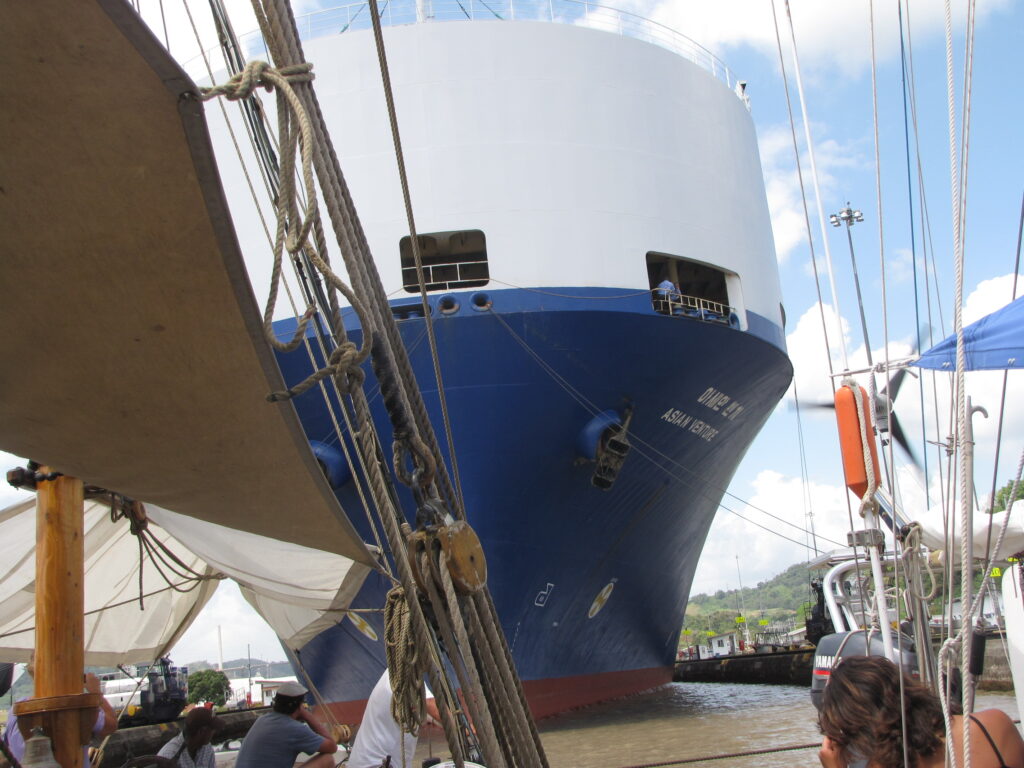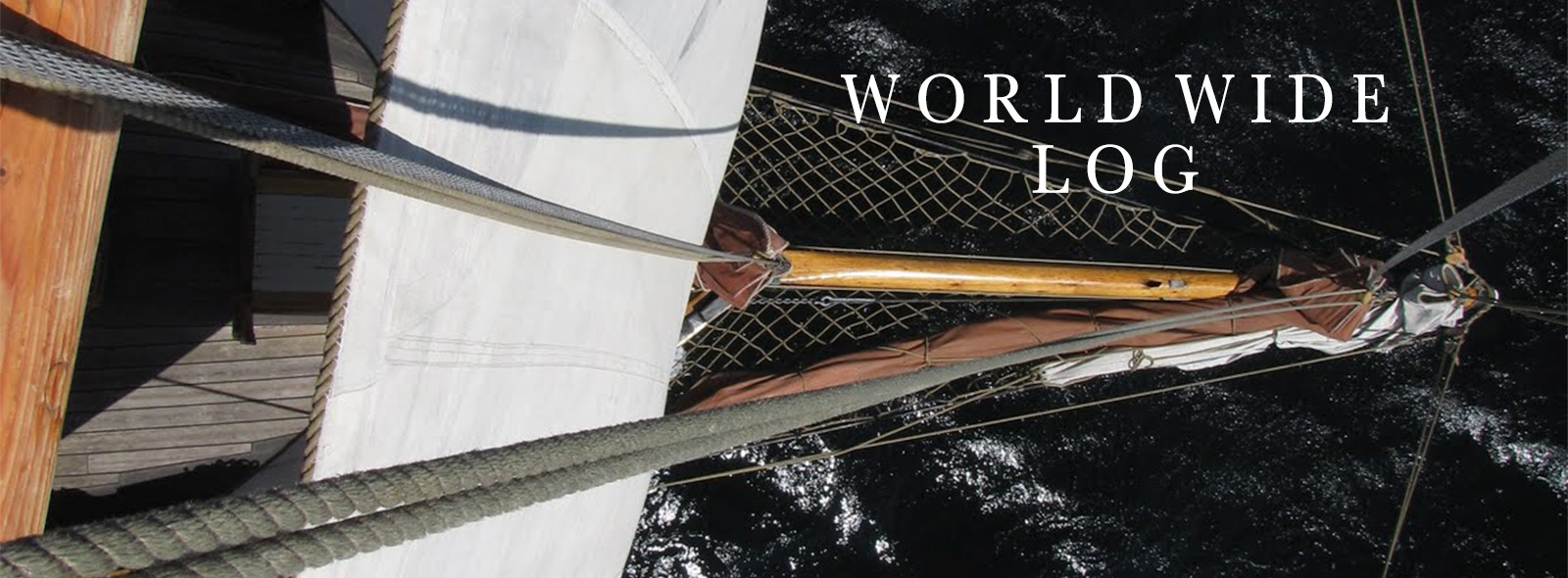
Skippers log 5: Balboa - Panama
After celebrating Christmas in Man ‘O War bay on Tobago It was time to get back to work.
We had the pleasure of our Good friends Martin and Mette and her three children Rasmus, Siguard and Bodil, it was great to see some familiar faces from Denmark so it made the celebration all the more festive.
We found an overhanging branch of an unsuspecting tree that was destined to become our Christmas tree and after the decorations brought from home were in place it was just like home.
The Danish tradition of waltzing around the tree with a belly full of good food and a little wine on Christmas Eve whilst singing the old familiar songs was faithfully observed. We must have made a sight in the darkness of the Tobagan night.
Trinidad was the scene of our next embarkation of voyage crew. We were held up three days by motor repairs and some lost luggage but with tanks and lockers full of the necessaries it was time to head towards Panama.
On Wednesday the 5th of January we sailed from Crewsinn marina and anchored up shortly after in Grand Fond Bay to swim and relax before the passage to Bonaire in the Netherlands Antilles.
The Passage of 440 miles was easy work what with a fresh Nor easter and one and a half knots current helping us along we made short work of it arriving late Sunday night .
We had decided that instead of visiting many islands for a day or so it was better to spend 4 to 5 days in a couple of places instead. This gives all onboard a chance to get ashore and appreciate these great places we visit.
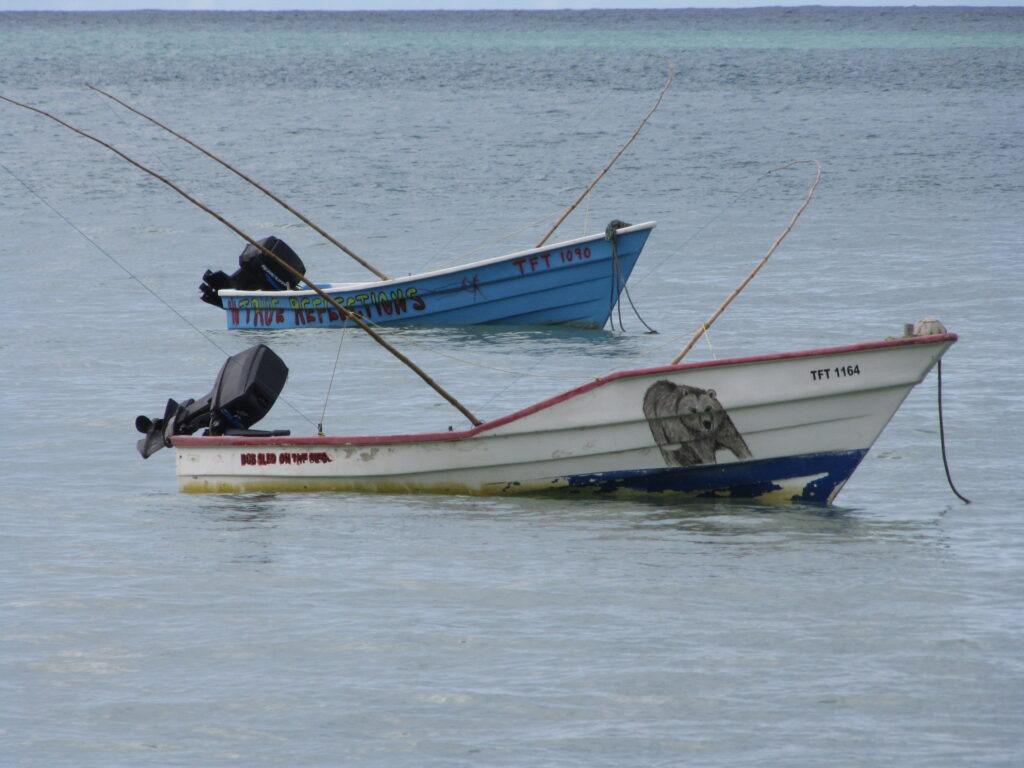
It takes a couple of days just to get orientated and catch up on sleep, leaving a few days more to get involved with the local specialties.
In Bonaire’s case it was without a doubt Diving or in our case snorkeling – rated as one of the top 5 places to dive in the world due to crystal clear water and a fantastic array of coral reefs.
The whole island’s coastline out to the 200 meter depth is declared a national park. Anchoring is strictly prohibited so the authorities have moorings in designated areas for visiting Yachts to use, and snorkel we did!
We found a great spot about half a mile away from Yukon’s mooring – the reef dropped away to a dark blue abyss – it’s enough to make a underwater wimp like me turn around and head into the shallows but when I saw Aron and Kristopher dive down to swim alongside a couple of sea turtles I thought “come on big guy you can do it”.
It was fantastic! I’ve never seen so many different colored corals in one place, and loads of fish large and small. I found the trick was to hang completely still so the fish around me relaxed.
It’s a world of its own and an experience to be remembered.
After 5 days lying on the mooring it was time to get moving, this time of year the North east trades are at their freshest with wind up and around 30 knots. This was further enhanced by a weak low pressure lying stationary in over the Colombian coast.
We were flying along averaging around 6 to 7 knots – up around 8 sometimes! It never ceases to get the blood pumping when the old girl gets a bone in her teeth, for a while we were reaching under a double reef main and inner jib and still holding around 8 knots Yukon, stable as 60 ton surfboard could be expected.
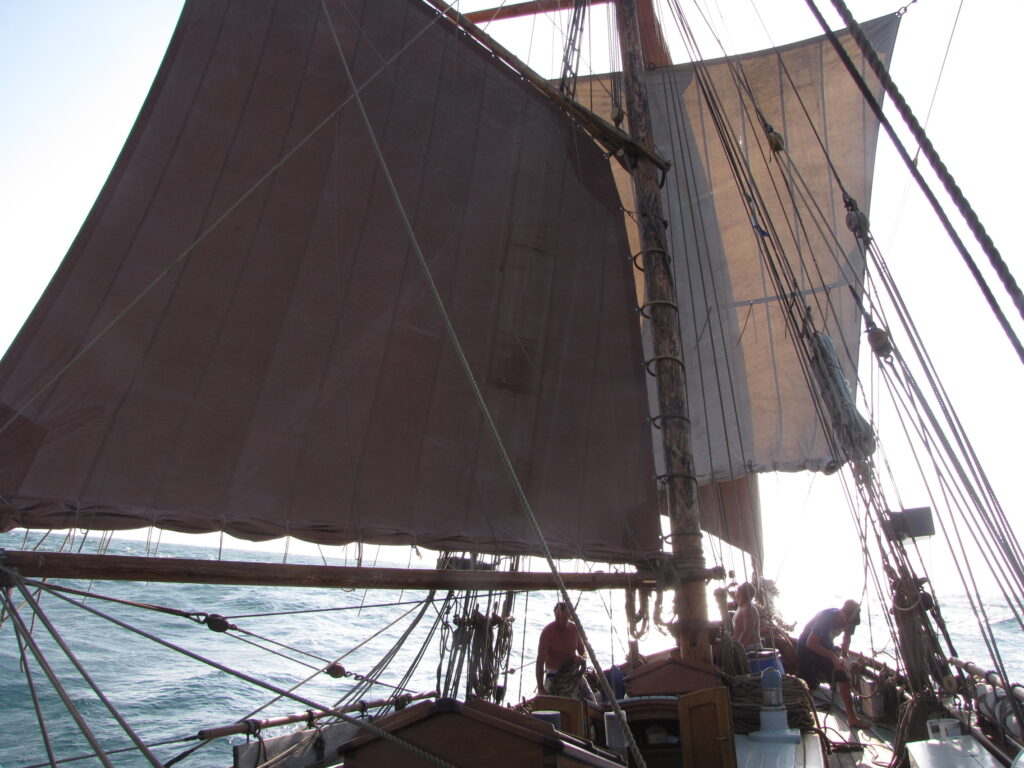
Saturday the 15th of January 19; 10 hours, the log reads, “Wear ship (gybe) 10 miles north of Punta de Gallinas alter course to 225 degrees true. Heading south to Oz”
This most northerly point of the South American Continent was a bit calmer then her Cousin Cape Horn at the other end of the ”island”. We celebrated with a dram of Riga balsam which had surprisingly survived in the bottom of the bar locker since Strynoe, it was a good feeling to know that it was Southerly courses all the way home to Adelaide.
Sunset on the 18th gave us a glimpse of the Serra Nevada mountains 20-odd miles in from the Colombian coast. At a height of 17,000 feet they usually have a dusting of snow on the top all year round, but it was difficult to see in all that haze.
The following afternoon Wednesday the 19th we made land fall in the San Blas islands at Porvenir to clear customs. We were in Panama, it was smiles all round as it had been a bit of a hard passage for some with some seasickness.
But spirits were high as Yukon became the center of attention as small dugout canoes called “ulu” appeared alongside manned by Kuna Indians. These traditional people have peopled the 340 islands of the San Blas and the neighboring strip of Panamanian mainland since time immemorial, their culture is very much alive and well, amidst the modern society that is Panama today.
Kuna’s have their own way, until very recently it has been forbidden under tribal law for outsiders to fraternize with Kuna woman or even settle in the picture postcard archipelago.
Until recently the coconut was the official currency and it is still not allowed to take them even if they are lying on the ground. Some islands are uninhabited while others are completely covered by a village. Some villages have electricity some do not.
With a population of about 50,000 it’s about a tenth of what it was before the invasion of the Spanish conquistadors.
The Kuna nation is strong and unified under a strict hierarchy of village chiefs called saila, and they seek independence from Panama. As we sit in the consulate or gathering hut in a small inland village two hours hike in from the mangrove covered coast, it’s easy to believe that it could be possible. It’s seldom we have seen such outwardly self sufficient communities.
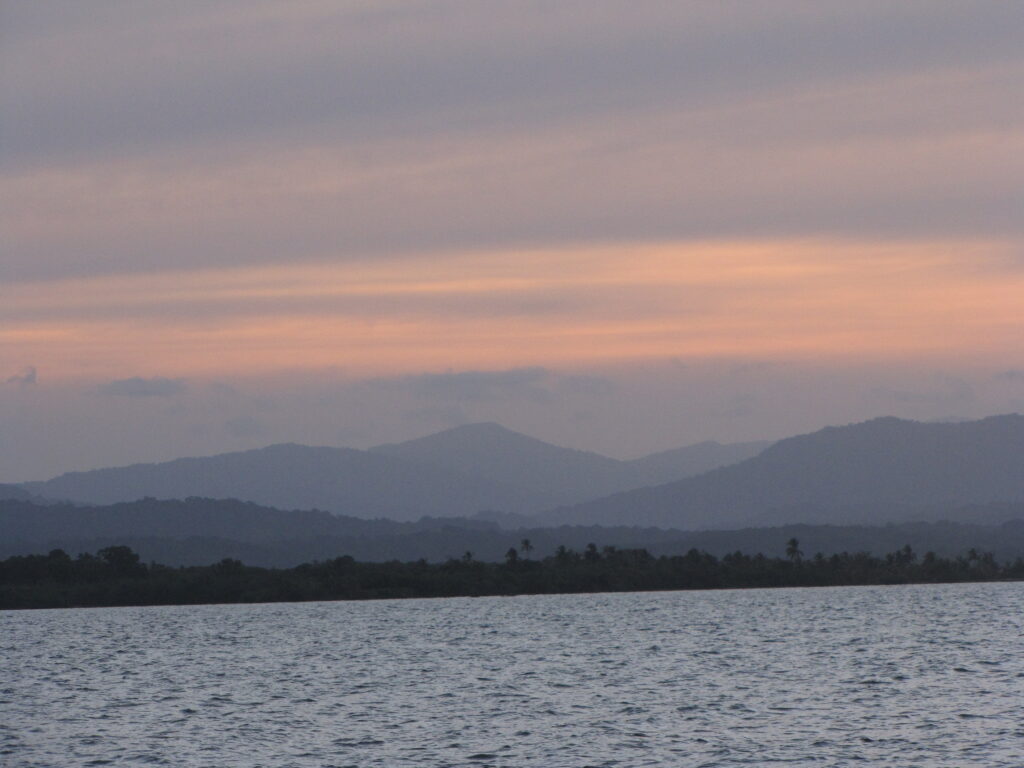
On our arrival at the Carti islands (a small group of four islands) we met the local Chief to be, Mr. G. He was much better at English than our Spanish could compete with!
He offered us a tour up the Rio Nicuesa, just a bit south of the Punta San Blas. The 8 meter dug out equipped with a 40 hp outboard arrived alongside Yukon at the agreed time of 8 am the next day. Onboard, Mr. G, a couple of young fellas, a skipper and a mature Kuna woman who was presented to us as “the cook”.
After 20 minutes motoring we began to close the dense Panama coast. It became evident that one of the young Kuna was in fact navigator and a local, returning home after a period away. His discrete finger pointing guided the slender canoe up the foliage-covered estuary with a relaxing certainty. The other youngster sitting beside me was occupied with the constant ritual of bailing the old mahogany canoe.
Visions of Indiana Jones traversing alligator infested waters sprung to mind as we ventured further and even further, questions began to arise, like how do we turn an 8 meter dugout round in a three meter wide stream? And do we have enough petrol?
After a period of almost hiking with the canoe our questions were quelled with the emergence of a small basin with a mud quay. We actually spotted a withered pack horse standing on the quay before we saw the quay. This was the end of the line, and with admirable dexterity our skipper lay alongside.
So began the walk. When you have spent so much time on board a boat a good walk is just the trick, but 20 kilometers hiking in the Panama jungle is maybe over doing it a bit! But with back packs in place and the bit firmly between our teeth it was forward march.
We had hoped to see some Macaws or Howling monkeys along the way – we heard some macaws but saw none. The jungle hides its trophies well.
After a couple of hours we arrived at the village. It had stood in the same place for the last five hundred years – until a couple of months ago, when floods had wiped out most of the bamboo huts and the village’s chief source of income, their banana plantation.
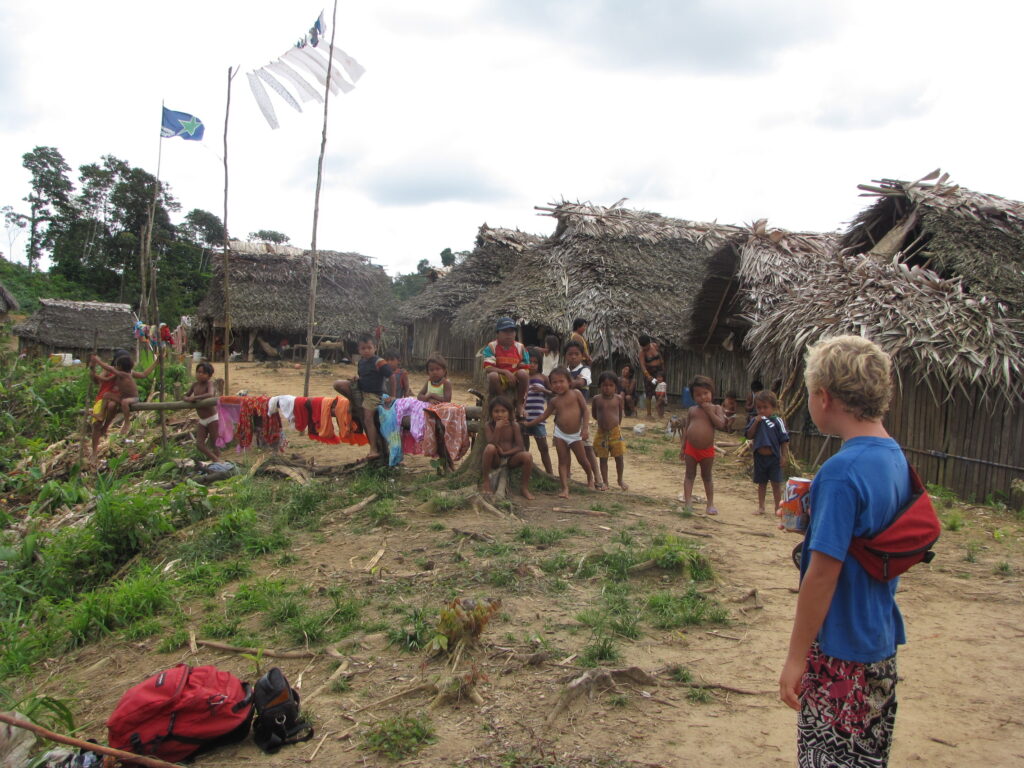
We were the first group of outsiders to visit the new village, and it was fascinating to see how these people lived.
I can guess that very little has changed in the past century, food prepared over mangrove fuel fires, and the large consule hut standing on top of the hill with its three hammocks for the village chiefs to recline and discuss the day’s events, surrounded by wooden benches so the rest of the village can listen or give their opinions or raise criticism.
We swam in the refreshing cool waters of the nearby river and while the kids in our group played war with a host of local lads we relaxed before lunch and purchased some necklaces and some “molas”. These intricate hand stitched cloths are a Kuna specialty and are lovely souvenirs.
After lunch it was time to head back but before our departure we were invited into the consule to meet the chief.
He welcomed us through our interpreter Mr. G and thanked us for our generous contribution saying that they were going through a hard time, but that the establishment of the new banana plantation was going ahead. Any donation from the outside world was gratefully received.
It was a humbling experience which could have been in a setting in the days of darkest primal time – then to my amazement he flipped open his cell phone and gave us his number if he needed to be reached!
Panama … is a land of contrast.
Our time in the San Blas was soon up and reluctantly we shoved off the following day towards Cristobal de Colon, the Caribbean entrance to the Panama Canal.
Last time I was here I was stranded for six weeks at the anchorage due to a blown engine so my nerves were up.
Colon is not a nice place, it was taxes every step of the way, and with one of the highest crime rates in the world it’s not a place to spend your holidays.
The formalities for transiting the canal include measuring the length of smaller vessels instead of the customary internal tonnage measurement. Yukon’s Length overall from the tip of the bowsprit to the aft edge of her solar panels is 81 feet 2 inches. We had to get her down to 79 feet 11 inches to come in to the middle price range. This would save us 250 dollars, worth the effort!
Removing the panels alone would not be enough as we were still an excruciating 2 inches over, should we chance it? We had heard that the measurers could be near fanatical so it wasn’t worth the risk. We ended up removing the whole of our davit system taking us down to a comfortable 71 feet.
As it turned out we ended up holding one end of the tape measure ourselves any way! Oh well.
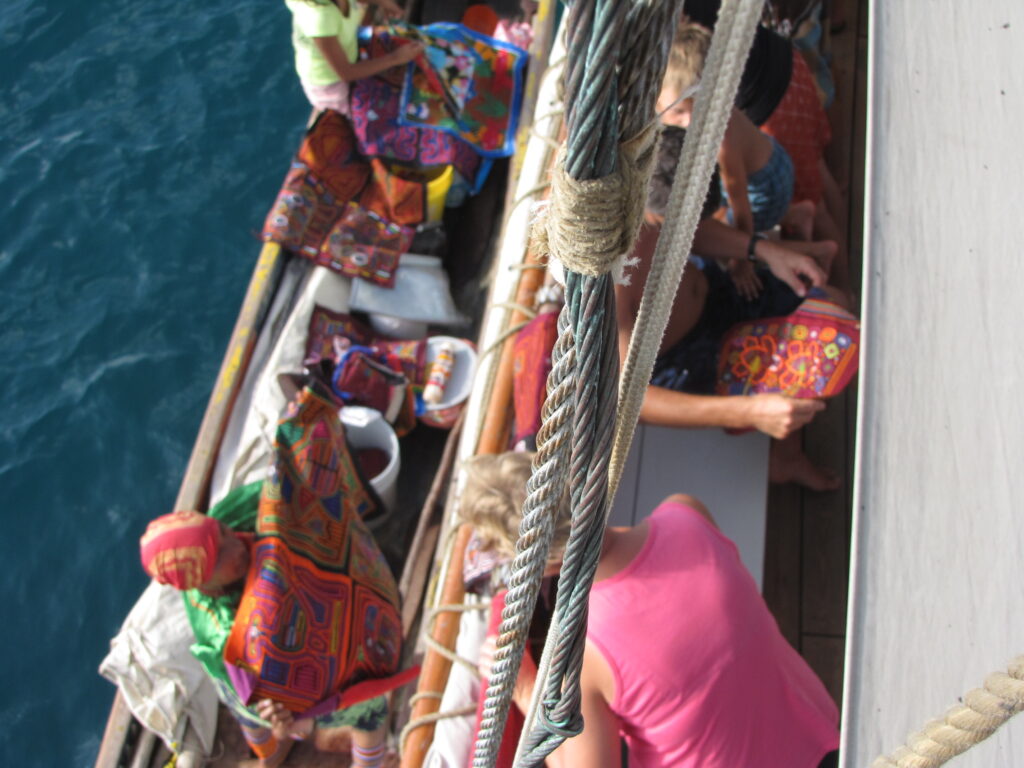
Transit day arrived as quickly and as sweetly as I could have hoped.
Two days waiting gave us time to settle up the finances and mooch into Shelter Bay marina and take on water, check emails and hop in the pool. We locked up into Gatun lake around 8 pm and went to anchors.
It was the first time I have had a Pilot on board my lovely ship and he was amazed to see so many kids on board a ship. With our two, the brothers Nikolaj and Alexander from Langeland, and Rebekka there were 5 children all together. They swung like monkeys in the rigging out of sheer excitement of the long awaited day.
It’s not too often we come so close to large ships. Their enormity fascinating us, just as our size and material induces waves of greeting from lofty bridge wings overhead.
Naturally we longed to see a giant Maersk container flying the Danish flag but that would come later, like so much more is to come.
As the last lock gate opened at the Miraflores lock the air was different – it smelt of salt!
The water was regaining its blue – what a relief free again! The Grand daddy of all the oceans waits – only 9,000 miles to Australia.
Tomorrow we set sail towards The Galapagos I will keep you all informed.
